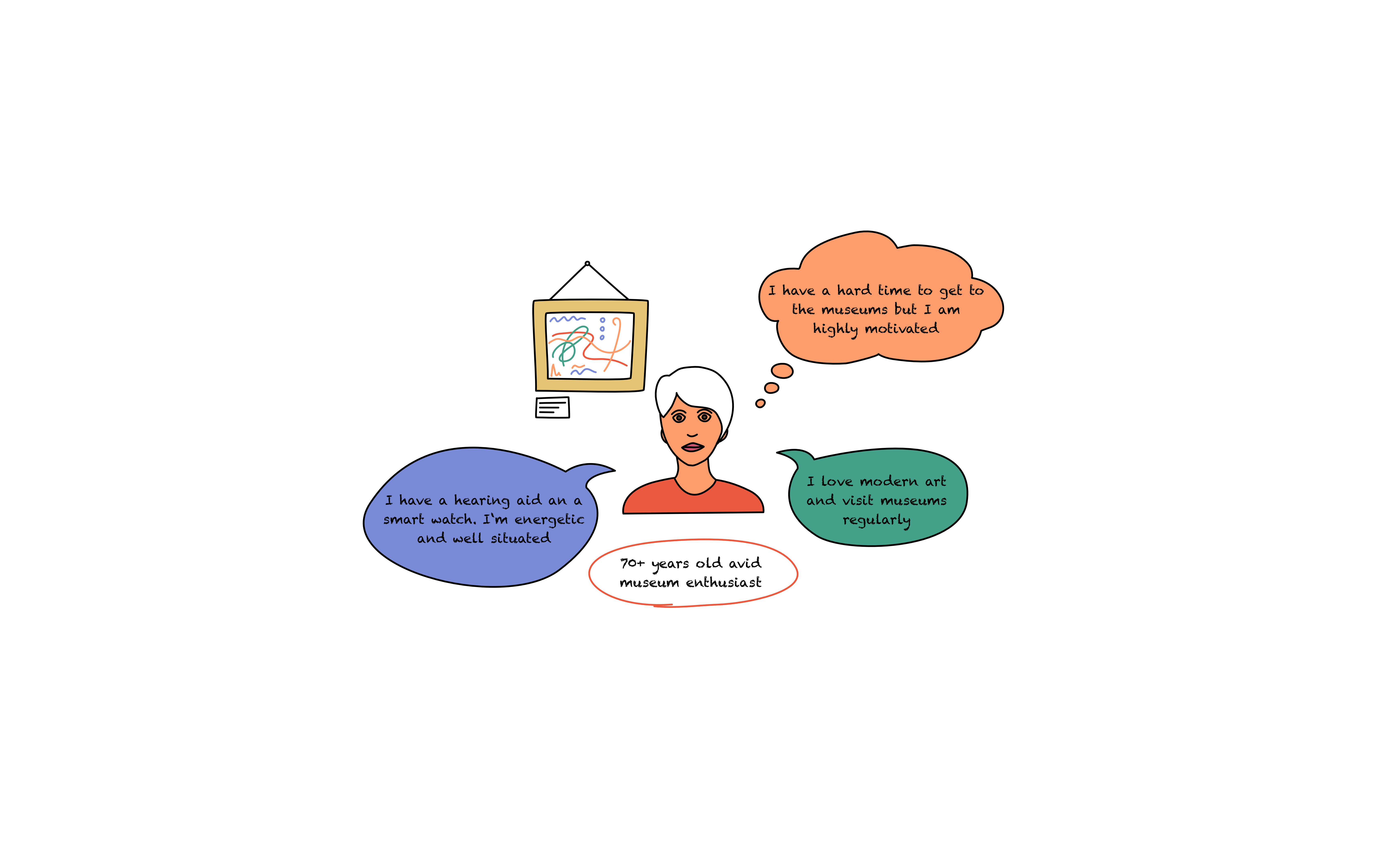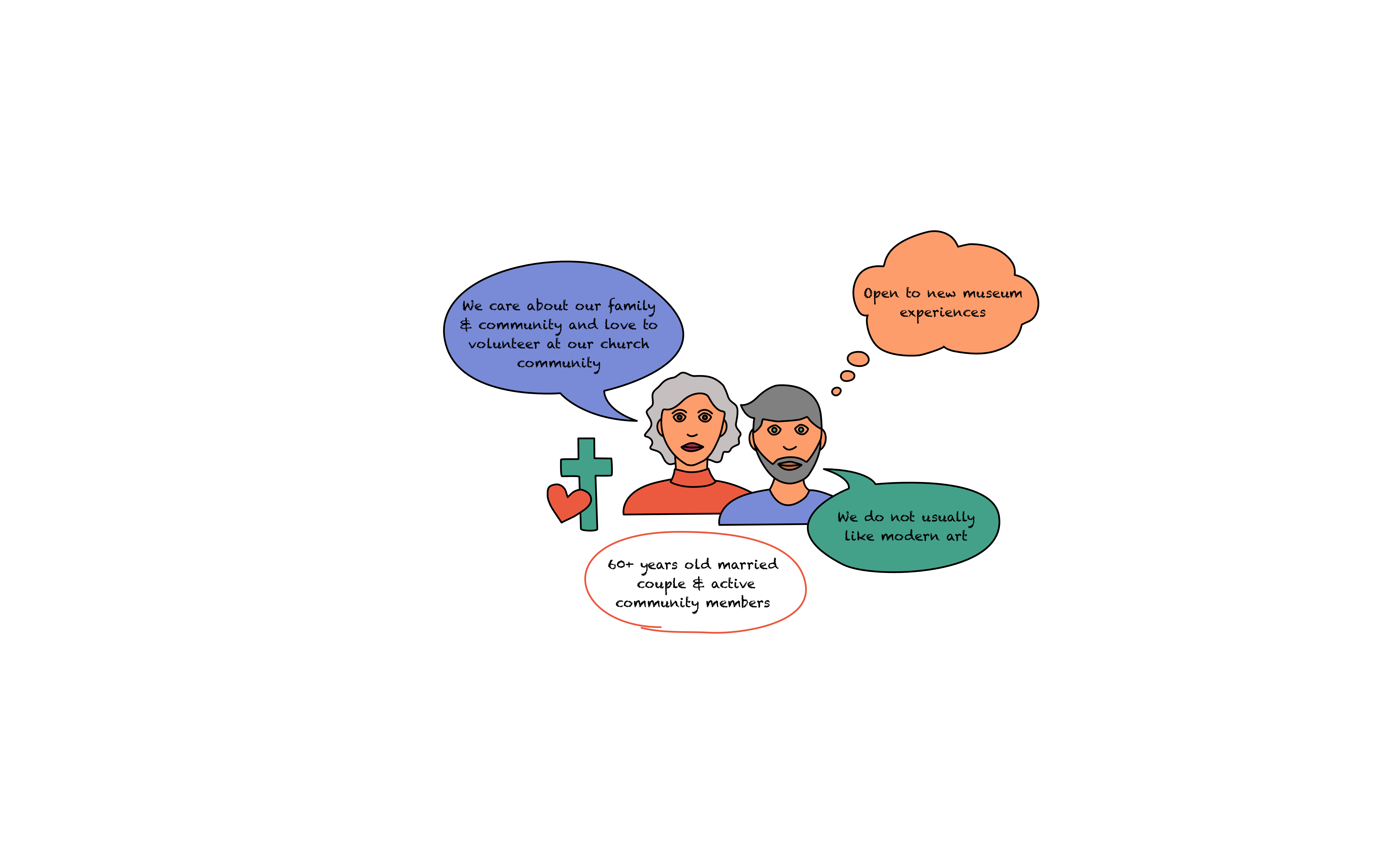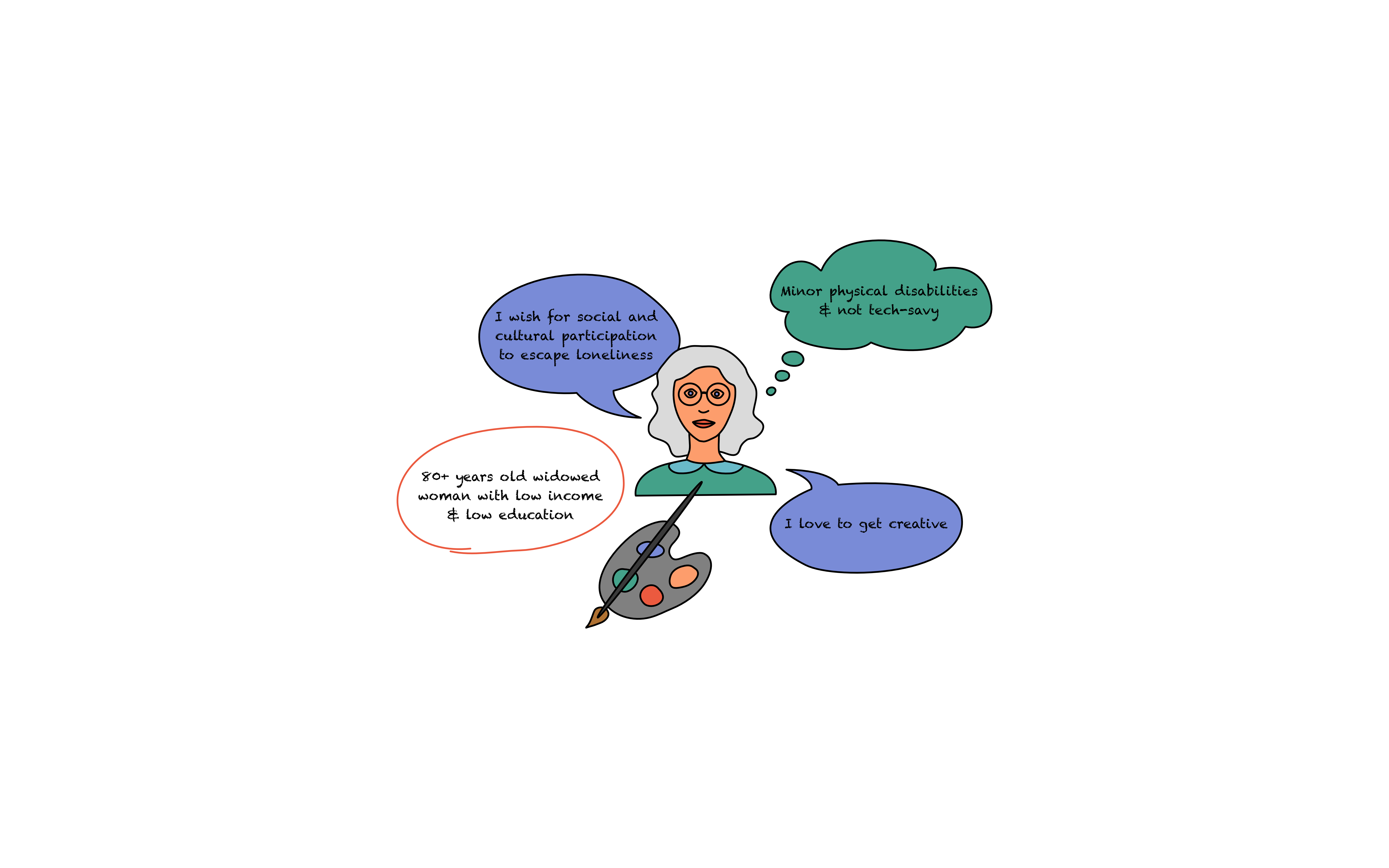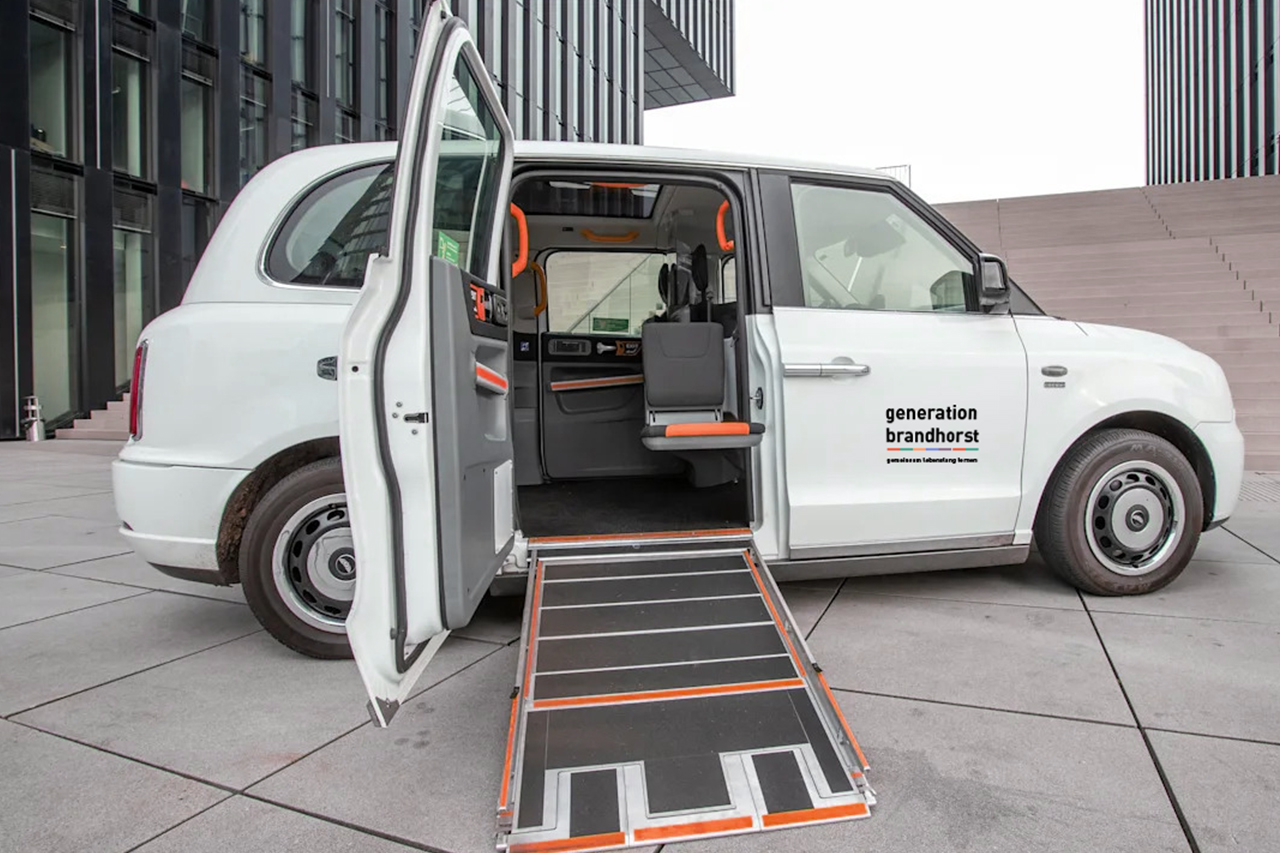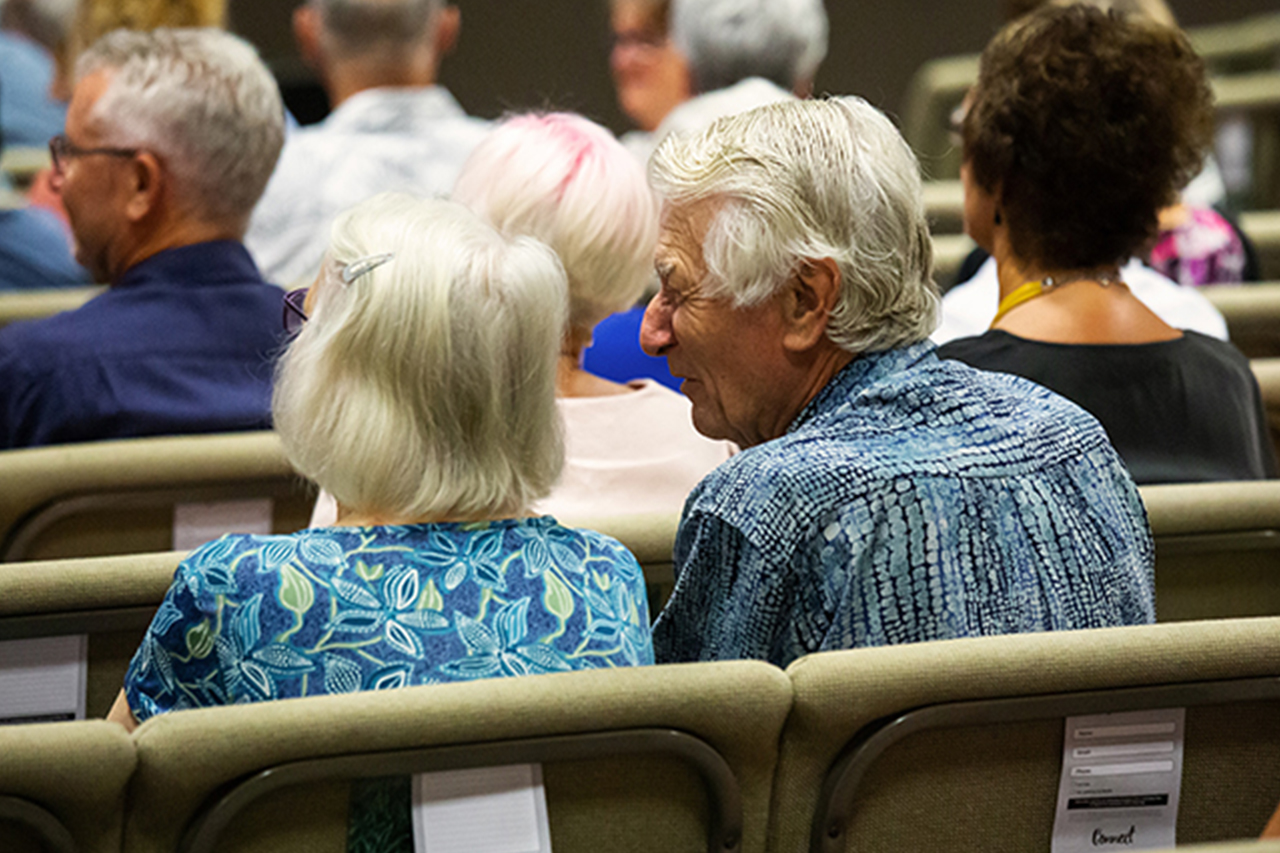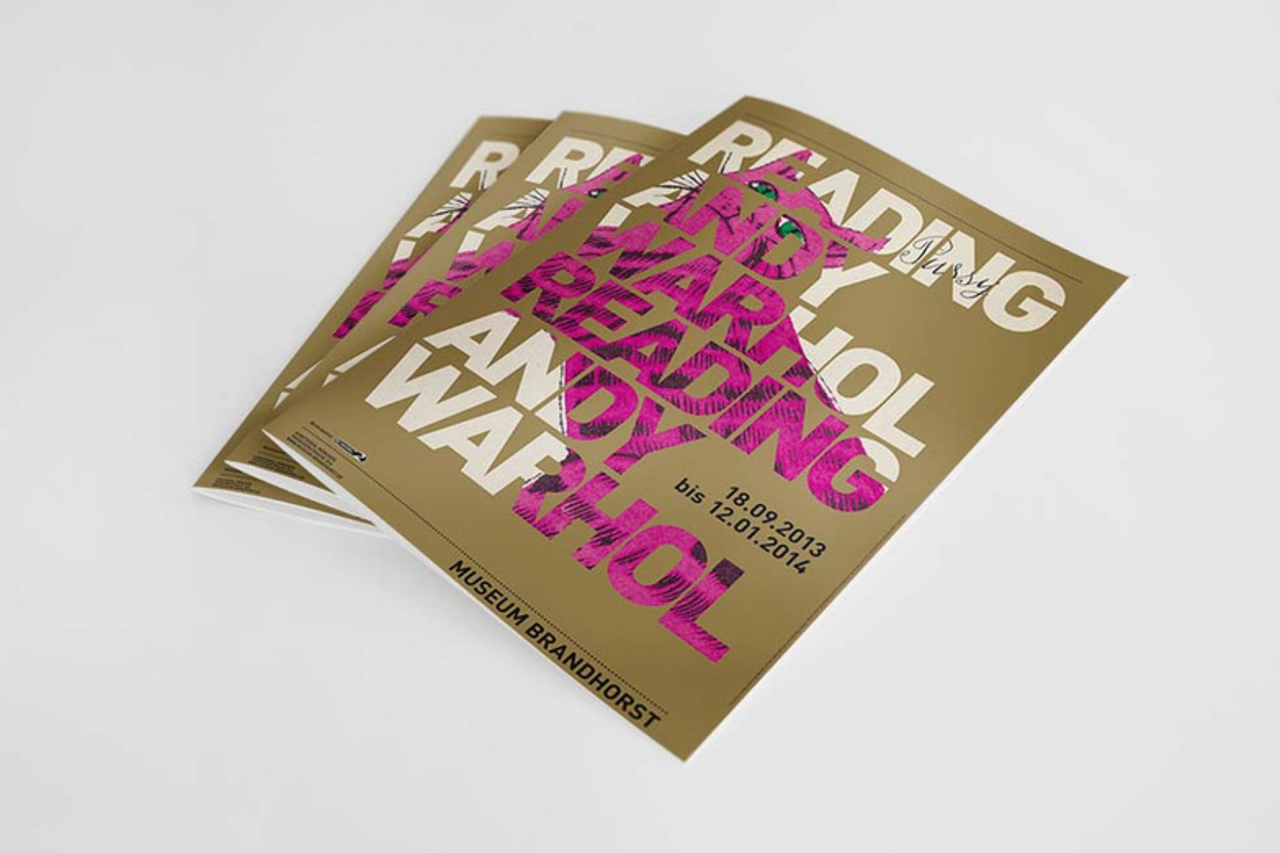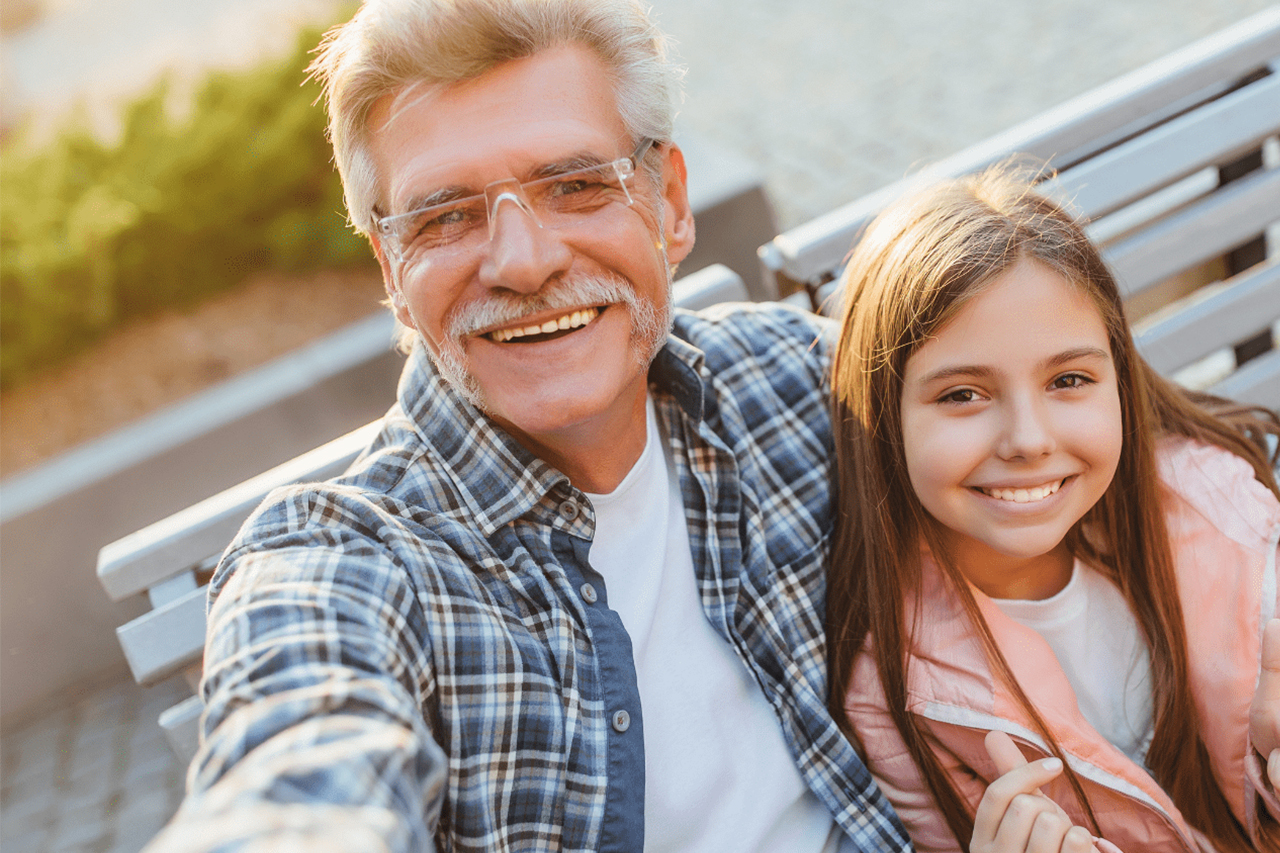Improving the visitor experience at Museum Brandhorst
In a joint project between students at the Macromedia University of Applied Sciences and the Museum Brandhorst in Munich, the visitor experience was to be investigated in relation to different groups: from families with children and tourists to visitors with disabilities and senior citizens. What are the needs of the individual groups, what offers are there for them and how do they perceive the museum? In this project, the visitor perception of the elderly at the Museum Brandhorst was examined and, based on the research conducted, solutions for improving the senior’s visitor experience are presented.
Client
Museum BrandhorstTeam
Dana Johnston, Evane Rodrigues, Lisa-Marie Werner, Sabrina Bialke, Susanne NeumairServices
Interdisciplinary Design Thinking Project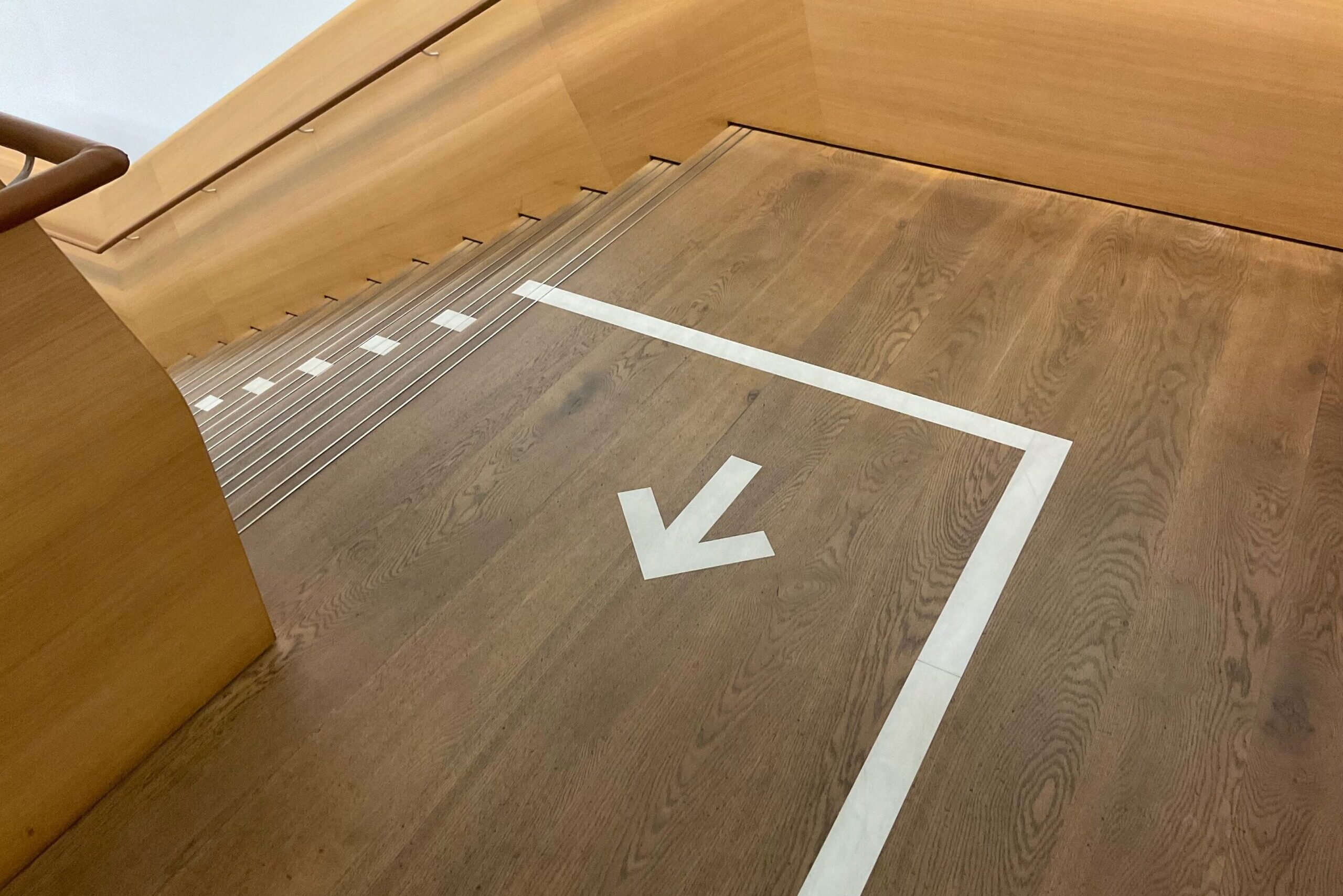
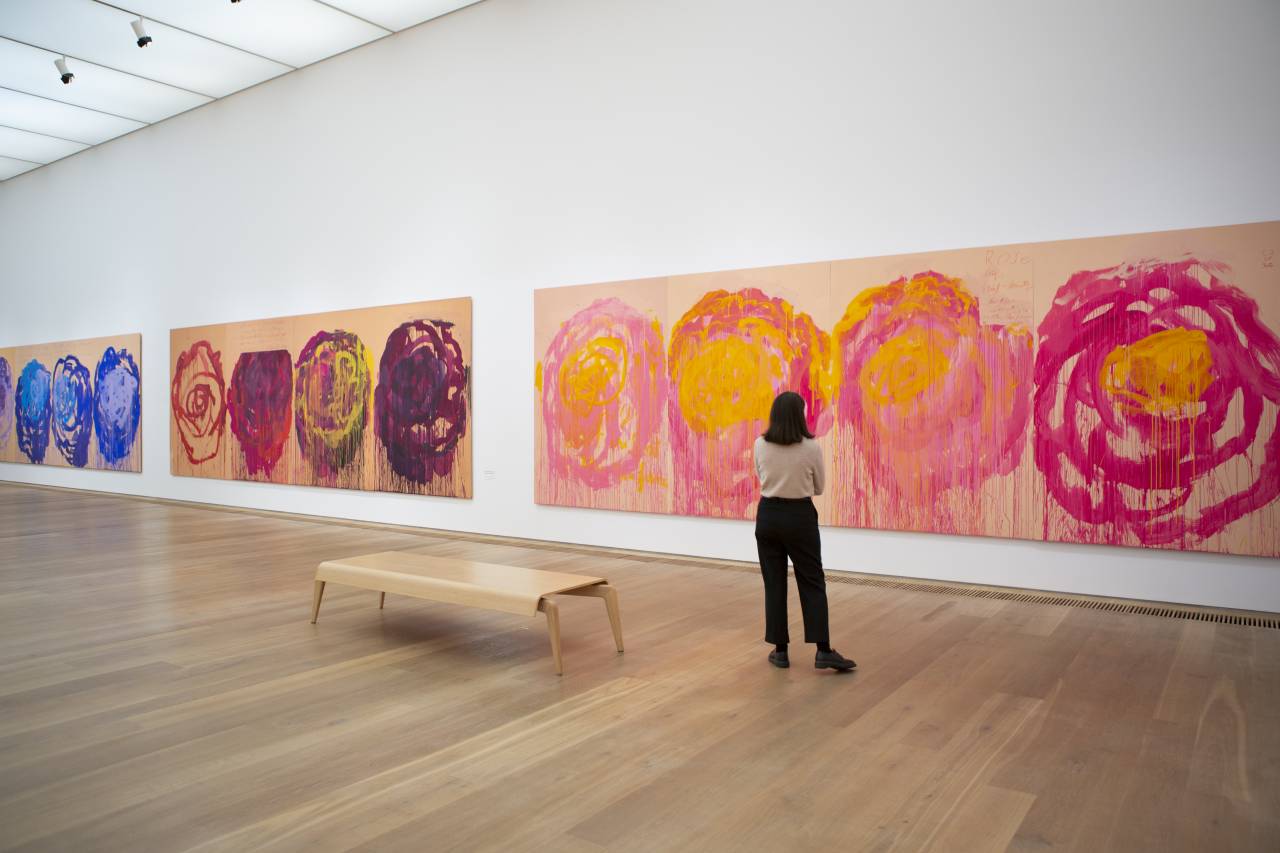
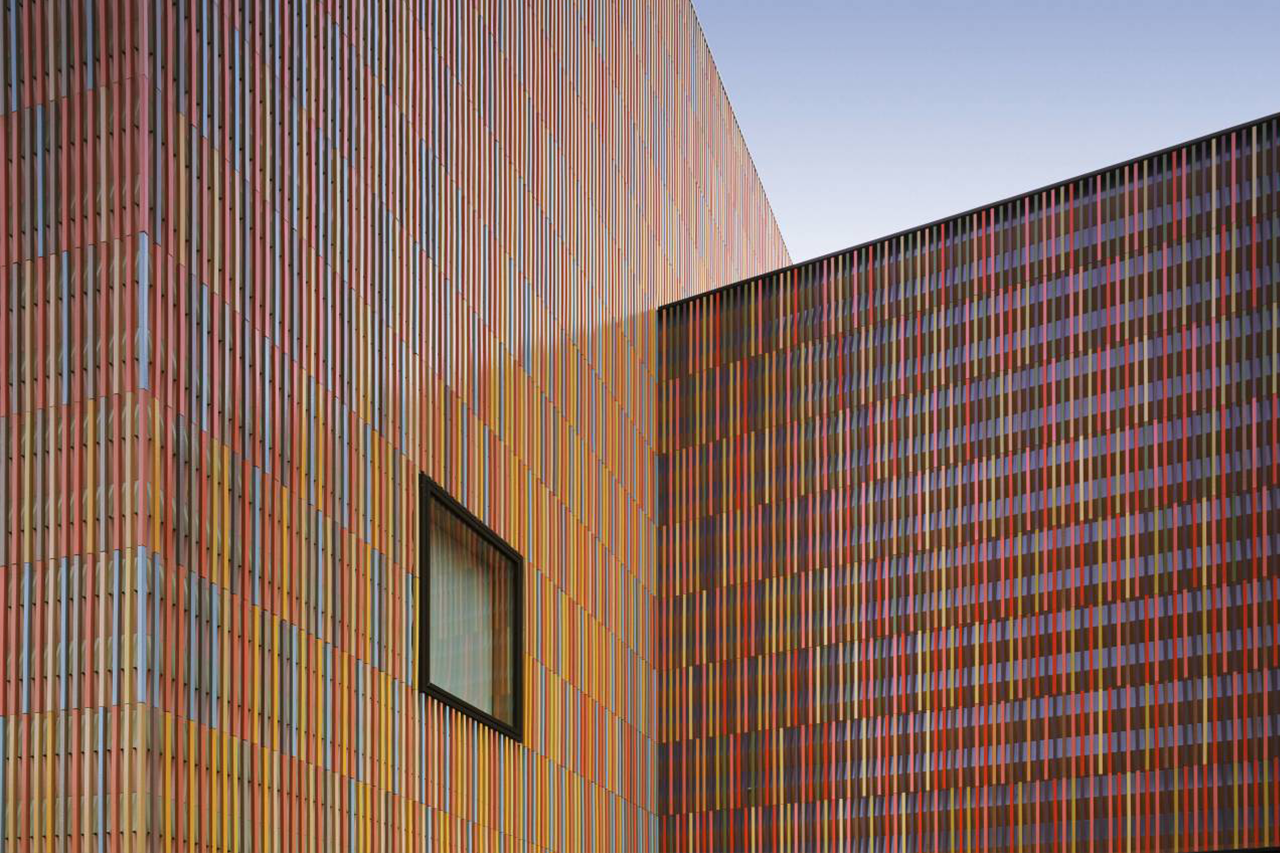
Approach
As a strongly human focused approach, a Design Thinking process begins with the development of empathy. Hereby, the goal is to gain deep insights to discover new perspectives and favorable situations. Another important part of this process is the continuous reframing of a problem in order to get a more comprehensive view on how to reach a favorable situation.
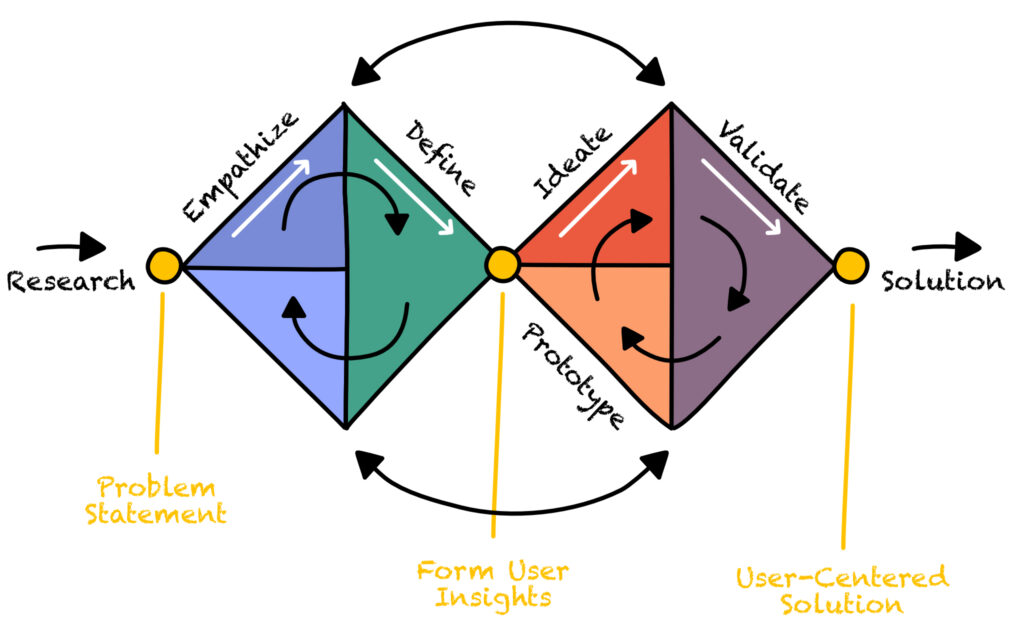
Initial Focus
In a briefing received from the Museum Brandhorst project partners Anna Woll (Museum Brandhorst Head of Communications) and Giampaolo Bianconi (Museum Brandhorst Curator), the overall project goal was described as making the Museum Brandhorst as accessible as possible to the broadest public.
How can we create the best possible experience for our senior visitors?
Know/Wonder Method
In order to generate a purposeful direction of empirical research, the Know/Wonder method was applied. This is a commonly utilized graphic organization tool within the design thinking toolkit, with the main purpose of revealing what prior knowledge is present and what knowledge is yet to be explored.
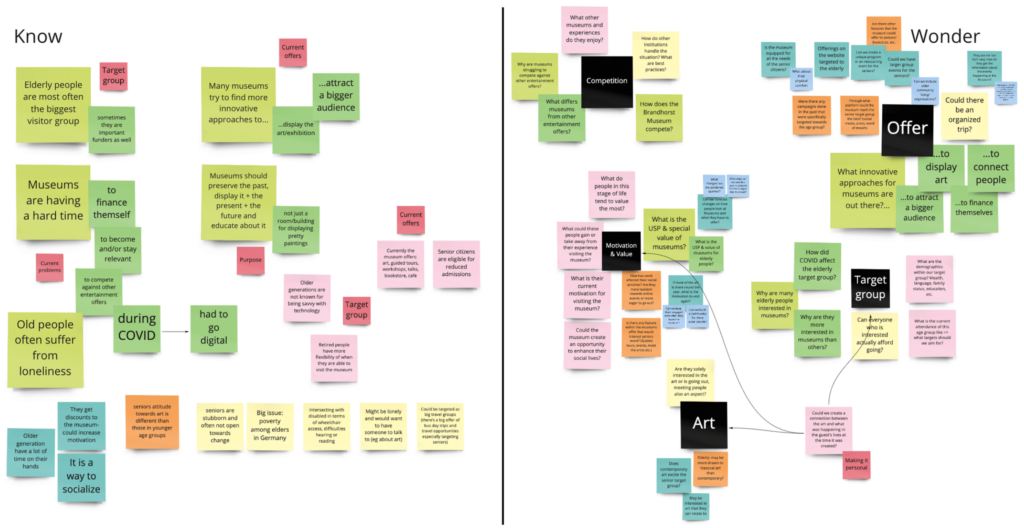
Primary Research
Primary Research
Primary research was conducted through observations at the museum as well as expert interviews and interviews with the target group. This created a profound basis for validating the secondary research and to understand the needs, longings and values of the target group. Based on this new findings, personas were created.
Ideation Phase
This next step in the Design Thinking process has the aim of addressing the problem statement with a great deal of ideas. The generation of new viewpoints allowed the team to broaden their perspective and to ensure that all angles of the problem are considered. The ideation process is crucial to frame potential concepts, as it supports free thinking but helps in the assertion of ideas at the same time.
Some of the recurring ideas focused on the marketing strategies of Museum Brandhorst and the ways of attracting senior visitors. It was established that more targeted offers need to be created and these need to be communicated through the right channels in order to get the attention of seniors. Some of the ideas suggested to point out the connection between the target group and the exhibited art by associating them with certain historical or nostalgic events that seniors can relate to. Based on the personas, some of the team members also considered whether it would be a possibility to create a collaboration between the museum and certain social institutions and invite their members for a tour through the museum.
Many ideas evolved around the concept of creating a special offer involving the families of seniors as well as intergenerational relationships. Family day events would include reduced admissions, private tours and unique activities tailored to fit different generations.
Another recurring theme involved the organization of events. These ideas suggested actively engaging the visitors by adding additional programs that they can frequently attend and therefore ensure that they would return even after visiting the exhibit. Some of the group members saw this manifesting by creating a Senior Art Enthusiast Group organized by the museum.
Continuing, the themes of accessibility and inclusivity played an important role in the brainstorming session. Many team members addressed the idea of a special tour for seniors in combination with a pick up service or a Traveling Museum.
The process of brainstorming created a free ideation flow that helped to get an overview of which ideas could be built up, complementing each other. Pointing out repetition was also helpful for the team as it established the direction of the solution by indicating which topics were most thought about.
Affinity Mapping is a design method used to gather large amounts of data and organize them based on similar themes and groups. This process is a combination of two steps, the first of which is to note down the ideas on sticky notes without approving or disapproving of any ideas and the second step is to organize the post-it and sort them into different categories. This method allows to outline the scope of the problem which leads to discoveries in issues, worries and key elements all in one place, refining the team’s focus.
As primary research pointed out that the seniors would almost always be accompanied by a friend or a family member, introducing a special day would encourage them to visit the museum with their entire family which would also increase the number of visitors for the museum. Events such as games, DIY art, or other fun activities could be introduced on a family day which would not only impel the family members together but also increase engagement among them. The idea of having a photobooth in the museum was also discussed. This would assist in creating a fun experience for the visitors and also serve as a token to remember their visit to make it more personal and could also be introduced at a reduced price for the family day.
Other ideas that encouraged communication included a social bench. The social bench would help seniors fight loneliness and enhance socializing. It could be a great way for the seniors to meet new people with the same interests and make new friends.
Numerous ideas around the theme of engaging the seniors such as elderly volunteering or memberships, involving younger generation/students, events and workshops hosted by the museum were brought up.
Involving students was another recurring idea. Different ways of involving students in the program were discussed such as how the program could be a part of an elective in universities, as collaborations with universities would help get more students to volunteer. This would increase the social exchange among different aged people and would also promote intergenerational exchange.
The 6-3-5 Method is a great tool for generating a large number of ideas in a collaborative group context, giving the opportunity to build on each other’s suggestions. Based on a previously conducted brainstorming session, each of the six team members quickly sketches out three ideas. Each participant passes their paper on to the next team member counterclockwise, giving them the opportunity to build on their ideas.
The first idea, the Round Table, would give seniors the chance to discuss their opinions and feelings on different artworks and also give them an opportunity for exchange – either with their peers or with other visitors, in an intergenerational context. There could be different levels of exchange, up to sharing advanced interpretations.
The next topic was called Experience from the Past. The main thought was that there could be events at the Museum Brandhorst, where seniors could come and be interviewed about a certain art exhibit they particularly like, in order to share their personal connection to it. This could have a very interesting historical connotation, as seniors might feel a connection to an event or era displayed in the art piece.
A possible Membership Program was discussed. This solution would involve perks such as online events and art courses, early access to new exhibitions and participants might even be allowed to have a vote on exhibition related events. Personalized memorabilia and special access to artist talks were proposed and a referral program was brought up. There could be monthly magazines for members, free entry and Bring Your Family days. Participants should be honored for their longevity of membership and need to be shown great appreciation.
Regularly recurring events were discussed, involving socializing opportunities for modern art enthusiasts as well as for people who are not particularly interested in modern art. It was proposed to host events with different themes, appealing to a large number of visitors through the variety of topics covered.
The solution
Generation Brandhorst is a membership program for dedicated visitors of the museum. It honors these visitors by providing them with special benefits, and also gives them the opportunity to run the program themselves. The program aims to improve and enhance the members’ experience at the museum and encourages continuous involvement and participation.
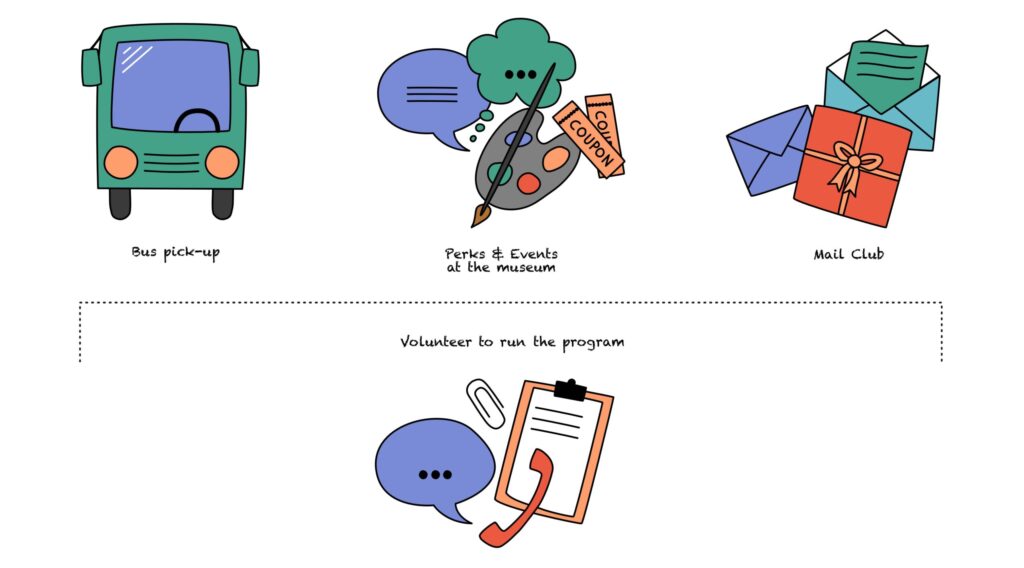
Before the Visit: Bus Pick-Up
Providing a bus pick-up service for members to regularly attend the museum would help those who are unable to make the journey comfortably on their own. This would be an attractive concept for the Widowed Woman persona and the Avid Museum Enthusiast persona, to help them both access the museum. Being able to attain their own method of transport to the museum would furthermore provide them with a sense of control.
During the Visit: Events and Perks
Offering access to desirable events and perks through the membership program encourages people to visit the museum frequently. A variety of offers would be available, many of which appeal to all three of the personas. Although some of these options overlap with current offers from the museum, the idea is that they would be exclusive to members and tailored to their interests, creating a custom and personal context. Costs are expected to be minimal, with the support of partnerships and existing resources.
After the Visit: Mail Club
The mail club is designed to keep members engaged year-round, following up after each of their visits to the museum and participation in on-site events, and inciting excitement for returning. It appeals to all three of the personas, as it makes them feel special through personal and exciting postal deliveries to their homes. Furthermore, it is a form of communication that this target group is already familiar with.
Volunteering
In addition to before, during, and after the visit, there is an opportunity for members to volunteer and get involved on a deeper level. The members are encouraged to get involved with organizing and running the membership program. This appeals to all three personas, as it gives people a sense of purpose, fulfillment, and community. To honor the volunteers of the program, they could each receive a special thank-you gift, which would make clear that their efforts are valuable and appreciated. The volunteer aspect would furthermore allow members to take ownership of the program and steer it in the direction they wish to go. This also reduces the necessary costs of staffing the program.
Image Sources
- The Double Diamond Approach (Own work, based on model by Design Council of UK, 2020)
- Museum Brandhorst exterior: https://www.museum-brandhorst.de
- Illustrations: Own work by Susanne Neumair
- Electric car: depiction based on image from https://levc.com
- https://unsplash.com/@bethbapchurch
- https://www.freepik.com/


